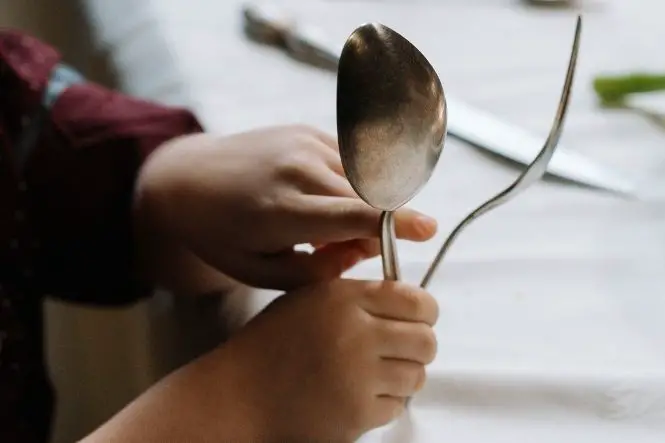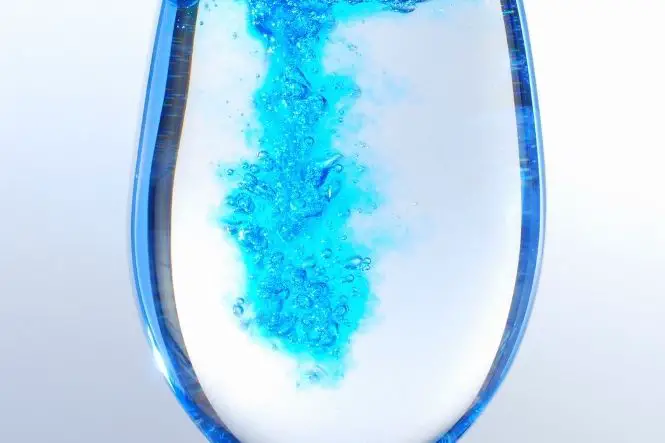Heat travels in three different ways – conduction (heat travelling through a solid), convection (heat travelling through liquids and gases) and radiation (heat travelling through empty spaces).
Detecting Fake Silver: Heat Conductivity in Metal
To find out if a spoon is real silver, put it in a mug with a similar solid silver spoon. Put a dab of butter on the end of each spoon, and stick something to the butter, for example a dried pea, a grain of rice, or a small piece of dried pasta. Pour boiling water into the mug, and see which item drops off first. If the pea falls off the silver spoon before the unknown spoon, the unknown spoon probably isn’t solid silver. This works because silver conducts heat more quickly than any other metal, so melts the butter first and the pea, grain of rice or piece of pasta falls off.
How is Heat Conducted?
When a solid is heated, the molecules start to vibrate more. The vibrating molecules knock into the next set of molecules, and the next, and the next, passing the vibration (heat energy) on, and so passing the heat along the solid. Put a metal-handled table knife or fork in a mug of hot water – does the handle get warm? How long does it take? Try it with a wooden or plastic kitchen utensil – does the heat travel through the wood or plastic?
Materials that are good conductors of heat, such as metals, feel cold to the touch, because they conduct body heat away quickly. Materials that are poor conductors of heat, such as plastic and wood, feel warm to the touch, because they do not conduct the heat away. Poor conductors of heat are also called insulators.
Uses Of Heat Conductivity
Many houses are heated with radiators, which are hollow metal tanks connected to each other by pipes. A pump moves hot water from a boiler through the radiators and pipes. The metal conducts the heat from the water, where it heats the room by convection and radiation.
Pans are usually made of metal, because this will conduct the heat from the hotplate to the food.
Insulating materials are used to keep heat in, for example fibreglass loft insulation, double-glazing (the air trapped between the two panes of glass is an insulator), wool jumpers and carpets. Insulating materials are also used to keep the cold in, for example the polystyrene in the walls of a cool box or a fridge.
Leave two cans of drink in the fridge overnight to get really cold. Get two boxes the same size, and fill one with shredded paper. Put one can in the empty box and the other in the box full of shredded paper, making sure that there is paper all around the can, including underneath and on top. Close both boxes and leave for a couple of hours – which can is colder? The shredded paper should have acted as insulation. This technique is used for ‘haybox cooking’, where a pot of food is heated to boiling, and then the pot is put in a box surrounded with insulation. This retains the heat and the food carries on cooking.
Pan handles and the handles of kitchen utensils are usually made of plastic or wood, to insulate the person cooking from the heat.







